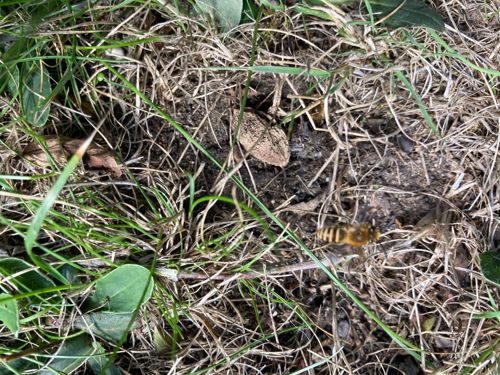Hoverfly (Flower Fly)
Scientific Name: Syrphidae (family)
Order & Family: Order Diptera, Family Syrphidae
Size: Typically 4 mm to 25 mm (0.16 to 1 inch) in length, varying by species.

Natural Habitat
Gardens, meadows, forests, and other areas with flowering plants; frequently found near aphid colonies.
Diet & Feeding
Adult hoverflies feed on nectar and pollen from flowers. Larvae of many species are predatory and feed on aphids, while others are saprophagous (feeding on decaying organic matter) or mycophagous (feeding on fungi).
Behavior Patterns
Adults mimic bees and wasps in coloration and sometimes behavior to deter predators. They are excellent fliers and can hover in place, fly backward, and execute quick maneuvers. They are important pollinators. Larvae are often found on plant stems and leaves, actively searching for prey.
Risks & Benefits
Benefits: Major pollinators of various plants, including crops. Larvae are natural biological control agents, consuming large numbers of aphids and other soft-bodied pests, reducing the need for chemical pesticides. Risks: No direct risks to humans; they do not sting or bite, despite their mimicry of stinging insects.
Identified on: 9/13/2025